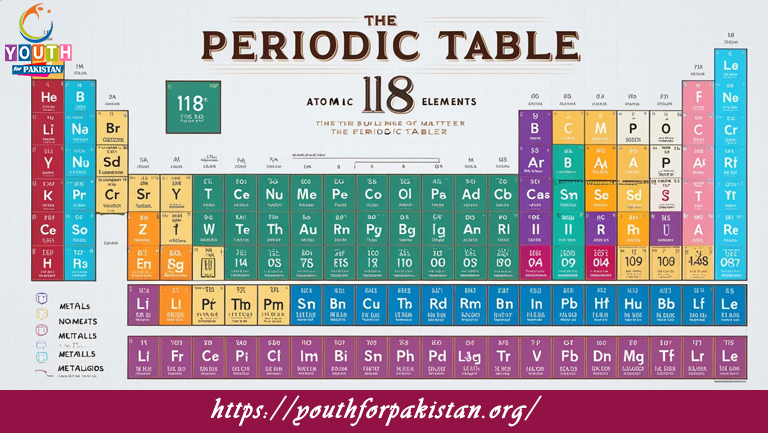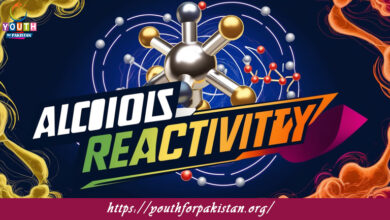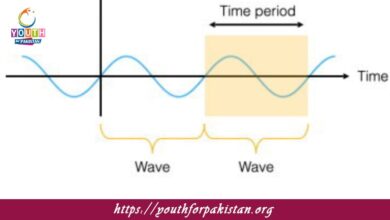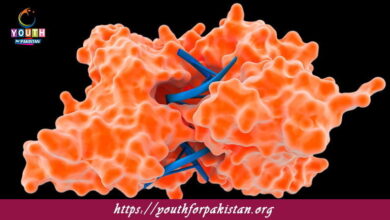Transition Elements General Characteristics MDCAT MCQs with Answers

Welcome to the Transition Elements General Characteristics MDCAT MCQs with Answers. In this post, we have shared Transition Elements General Characteristics Multiple Choice Questions and Answers for PMC MDCAT 2024. Each question in MDCAT Chemistry offers a chance to enhance your knowledge regarding Transition Elements General Characteristics MCQs in this MDCAT Online Test.
Which of the following is a characteristic property of transition metals?
a) High electronegativity
b) High melting and boiling points
c) Low density
d) Non-magnetic nature
Transition elements are found in which block of the periodic table?
a) s-block
b) p-block
c) d-block
d) f-block
Which property is common among transition metals?
a) High ionization energy
b) Variable oxidation states
c) Lack of catalytic activity
d) Poor thermal conductivity
Transition metals form colored compounds due to:
a) The presence of unpaired electrons in d-orbitals
b) The presence of paired electrons in s-orbitals
c) The absence of d-electrons
d) The high reactivity with non-metals
Which of the following transition metals has the highest atomic number?
a) Iron
b) Zinc
c) Platinum
d) Chromium
Transition metals exhibit which type of magnetic behavior?
a) Diamagnetic only
b) Paramagnetic only
c) Both diamagnetic and paramagnetic
d) None of the above
The transition metals are characterized by their ability to:
a) Form covalent bonds only
b) Show multiple oxidation states
c) Be highly reactive with water
d) Form ionic bonds only
What is the common oxidation state of copper in its compounds?
a) +1
b) +2
c) +3
d) +4
Which property is not characteristic of transition metals?
a) High density
b) High melting point
c) High reactivity with acids
d) Formation of complex ions
Transition metals commonly form:
a) Simple anions
b) Complex ions
c) Simple oxides
d) Non-ionic compounds
The transition metals can form:
a) Only one type of oxide
b) Two types of oxides
c) Multiple types of oxides
d) No oxides
Which of the following elements is not a transition metal?
a) Manganese
b) Zinc
c) Lead
d) Cobalt
The transition metals are typically good conductors of:
a) Heat
b) Electricity
c) Sound
d) Both heat and electricity
The color of transition metal compounds is due to:
a) Absorption of light in the visible region
b) Emission of light in the ultraviolet region
c) Reflection of light in the infrared region
d) Absorption of infrared light
Transition metals are known for their:
a) High ionization energies
b) Low density
c) Ability to form various colored compounds
d) High solubility in water
The presence of which type of orbitals leads to the formation of complex ions in transition metals?
a) s-orbitals
b) p-orbitals
c) d-orbitals
d) f-orbitals
Which transition metal is commonly used as a catalyst in the Haber process?
a) Nickel
b) Platinum
c) Iron
d) Copper
Transition metals have high:
a) Reactivity with acids
b) Electronegativity
c) Melting points
d) Atomic radii
The ability of transition metals to show variable oxidation states is due to:
a) Their large atomic size
b) The presence of unpaired d-electrons
c) Their high reactivity with non-metals
d) Their low ionization energies
Which of the following transition metals is used in stainless steel?
a) Manganese
b) Zinc
c) Chromium
d) Lead
Transition metals typically exhibit:
a) A single oxidation state
b) Several oxidation states
c) No oxidation states
d) Only oxidation state of zero
Which transition metal is used in the production of glass and ceramics?
a) Cobalt
b) Molybdenum
c) Vanadium
d) Zirconium
Transition metals often form:
a) Single oxides
b) Complex oxides
c) Simple salts
d) Non-aqueous solutions
The presence of which electrons in transition metals contributes to their ability to form complex ions?
a) s-electrons
b) p-electrons
c) d-electrons
d) f-electrons
Transition metals are typically:
a) Soft and malleable
b) Hard and brittle
c) Soft and ductile
d) Hard and conductive
Which of the following elements is a transition metal and a common catalyst in hydrogenation reactions?
a) Palladium
b) Barium
c) Potassium
d) Calcium
Transition metals often form:
a) Ionic compounds only
b) Covalent compounds only
c) Both ionic and covalent compounds
d) Only complex ions
Which property is not generally observed in transition metals?
a) Formation of colored compounds
b) High thermal conductivity
c) Ability to form complex ions
d) High reactivity with water
The transition metals in the periodic table are located in:
a) Groups 1 and 2
b) Groups 13 to 18
c) The d-block
d) The f-block
Transition metals are known for their:
a) Lack of reactivity with acids
b) Ability to form coordination complexes
c) Low melting points
d) High solubility in organic solvents
Which transition metal is used in the catalytic converter of automobiles?
a) Rhodium
b) Strontium
c) Boron
d) Lithium
What causes the high density of transition metals?
a) Their large atomic size
b) Their high atomic mass and close packing of atoms
c) Their high reactivity with acids
d) Their low melting points
Transition metals can exhibit multiple oxidation states due to:
a) Their high atomic number
b) Their ability to lose different numbers of d-electrons
c) Their low ionization energies
d) Their high reactivity with water
Which transition metal is used in the preparation of ammonia in the Haber process?
a) Iron
b) Silver
c) Molybdenum
d) Rhodium
The magnetic properties of transition metals arise from:
a) Presence of paired electrons only
b) Presence of unpaired electrons in d-orbitals
c) High density
d) High melting points
Which property is typically used to identify transition metals?
a) Density
b) Melting point
c) Color of their compounds
d) Electronegativity
Transition metals generally do not form:
a) Complex ions
b) Colored compounds
c) Simple anions
d) Various oxides
Which transition metal is used in the manufacture of stainless steel?
a) Nickel
b) Iron
c) Manganese
d) All of the above
The ability of transition metals to form complex ions is due to:
a) Their high ionization energy
b) Their ability to lose only s-electrons
c) Their small atomic radius
d) The availability of d-orbitals for bonding
Which transition metal is commonly used as a catalyst in the production of sulfuric acid?
a) Molybdenum
b) Platinum
c) Vanadium
d) Palladium
If you are interested to enhance your knowledge regarding Physics, Chemistry, Computer, and Biology please click on the link of each category, you will be redirected to dedicated website for each category.





